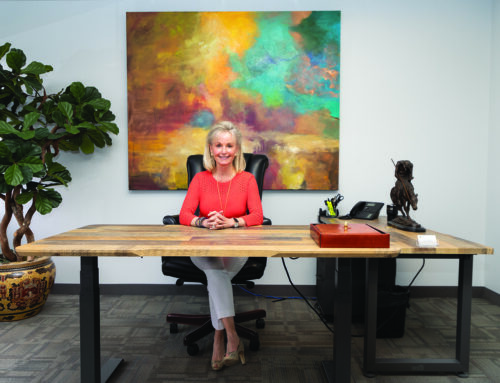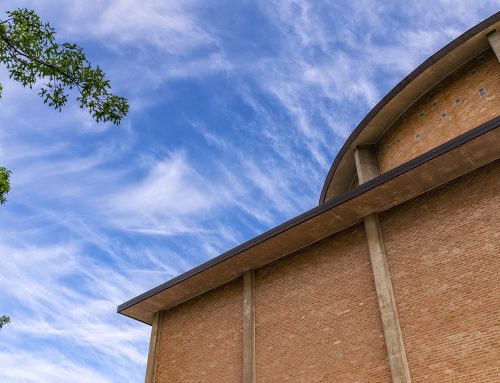Though Judy and Neil Smiley bought their Preston Hollow home in1990, it was built in 1954, a time when big closets and large master bedrooms were luxuries and styles were inclined toward Pepto-pink bathrooms.
At first, the Smileys dabbled in small projects, such as installing new windows.
“Initially, I was overwhelmed by the size of the house, so remodeling was not anything I wanted to tackle,” Judy says.
Four years later, as their children grew older, the Smileys found they wanted to make their 3,400-square-foot home “more traditional.”
Traditional for modern times, that is. The Smileys decided to give their 14-year-old daughter, Paige, the downstairs master bedroom.
“This is so much bigger than even her friends who live in these $4-million homes,” says Judy, of the 16-by-16-square-foot room. Judy and Neil had the room repainted in a sky blue and trucked in all the usual teenage accessories: “Lots of bulletin boards, two beds, and a shabby-chic style bed and dresser that had been Neil’s mother’s over a half century ago.” That left all three children, including sons Clay, 13, and J.D., 10, with their own downstairs wing.
“It’s nice when they have friends spend the night because we don’t really hear them,” Judy says.
With the kids downstairs, Judy and Neil wanted their own space, so they built a 1,000-square-foot “parent’s quarters.”
For this project, the Smileys had builder Charles Davis annex the space directly above the garage and paint the siding to match the existing brick exterior.
“We get a great view of the backyard, and we didn’t want to take up any of that space,” says Judy of their soccer/hockey/basketball field of a backyard.
The upstairs room makes a U shape that has the master bedroom at one end and a home office at the other. Neutral carpet was used throughout the addition to complement the other understated accouterments: “rough-looking” low-glaze almond tile, recessed lighting, and brown and black granite countertops.
Judy and Neil’s upstairs oasis has been an exercise in both architectural and parenting utilitarianism.
“Sometimes kids don’t really want to be with you, so there are spaces for them, but we’re not so far removed,” Judy says, and then laughs. “We all have to congregate in the kitchen, because we all need food.”
With quality family time in mind, the Smileys decided to tackle that room next, They began the redo with the intention of just a few tucks and lifts, and soon found that they were going in for a full facelift.
“We gutted the space,” Judy says.
Redstone Kitchens handled the job. Gray, painted wood cabinets were replaced with cherry wood, and the laminate gray countertops became a thing of the past as well. The same black and brown granite used in other parts of the house was employed in the kitchen, as was the almond tile used in the master bath (but which was finished a bit more smoothly for the well-traveled space). What they have now is a gloss reminiscent of a model home. Pretty much the only thing that remained untouched was the original Chambers range stove.
“We knew that a lot of people like to keep those,” says Judy of the stove. “That you might even try to track one down. It works great and it looks fun.”
One detail in another part of the house that the Smileys found neither great nor fun was the pink bathtub and commode in the bathroom their boys used. Redstone took charge of this project as well, rearranging the space to install a floor-to-ceiling frosted glass shower (“Boys just need showers,” Judy says.), with the same urban accompaniment of granite surfaces and stone flooring.
Some old things, however, do become new again, as is the case with the family’s living room. Dark wood molding in the middle of the ceiling puzzled the Smileys at first, but “when you live somewhere long enough, everything sort of comes and goes. We see this in all the homes now.”
“We’re not super picky,” says Judy of the decisions that were made. “We are completely functional now, so from now on everything else will be cosmetic.”
“It would be nice if there were more closets,” she says. “I guess we just have more stuff than we used to, but you learn to work around that.”
But one thing they have kept is the traditional value of making a house a home.
“This is a great family house, and it’s turning out to be a great teenager home,” Judy says.






